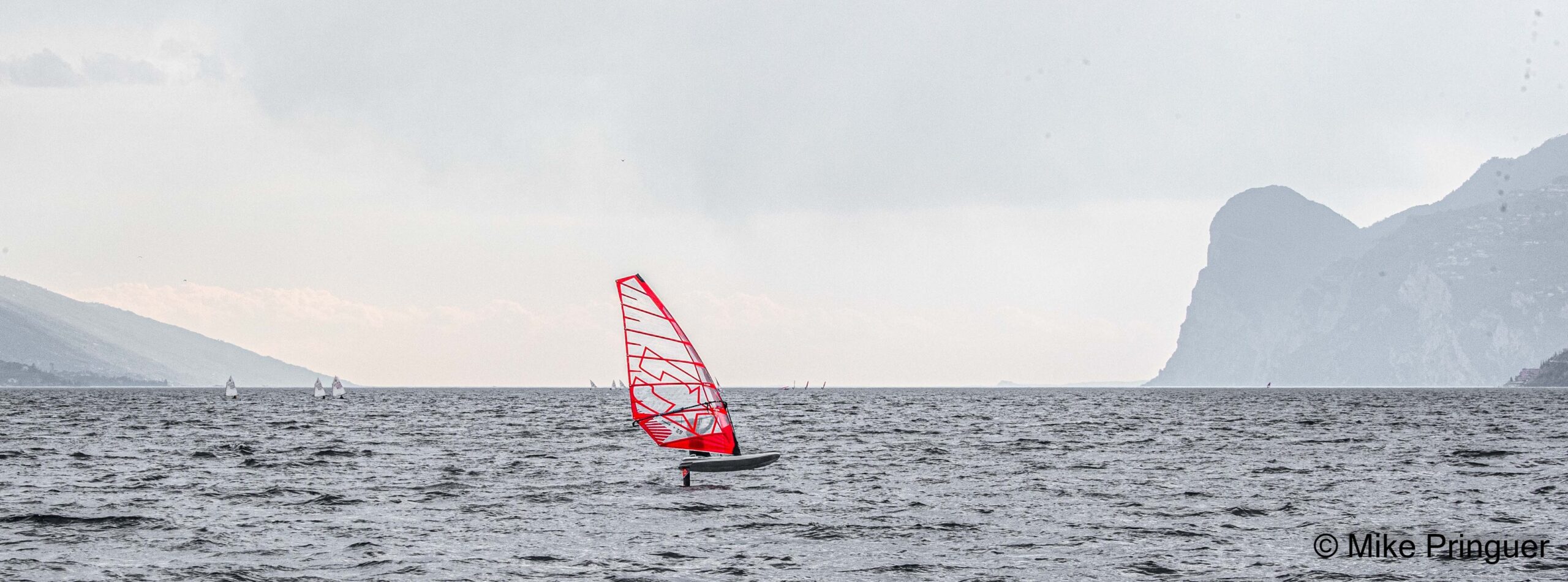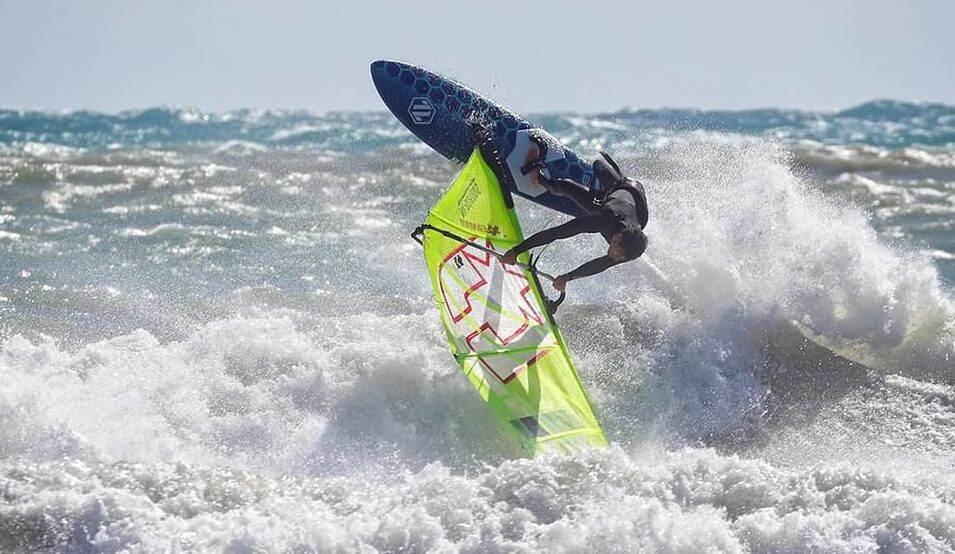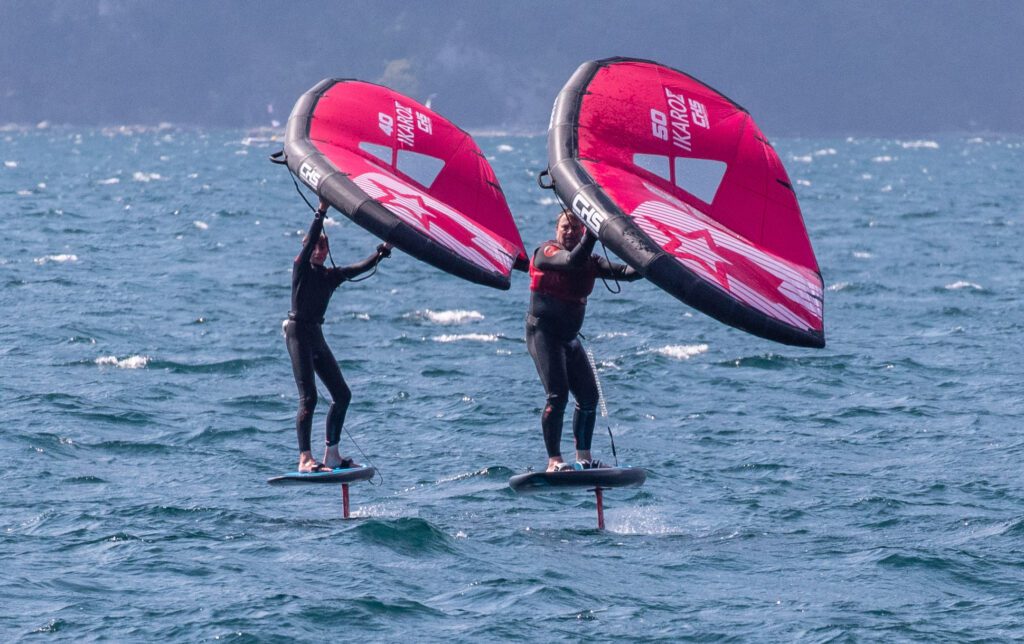Your basket is currently empty!
Windsurfing: bench mark moves & realistic progression.
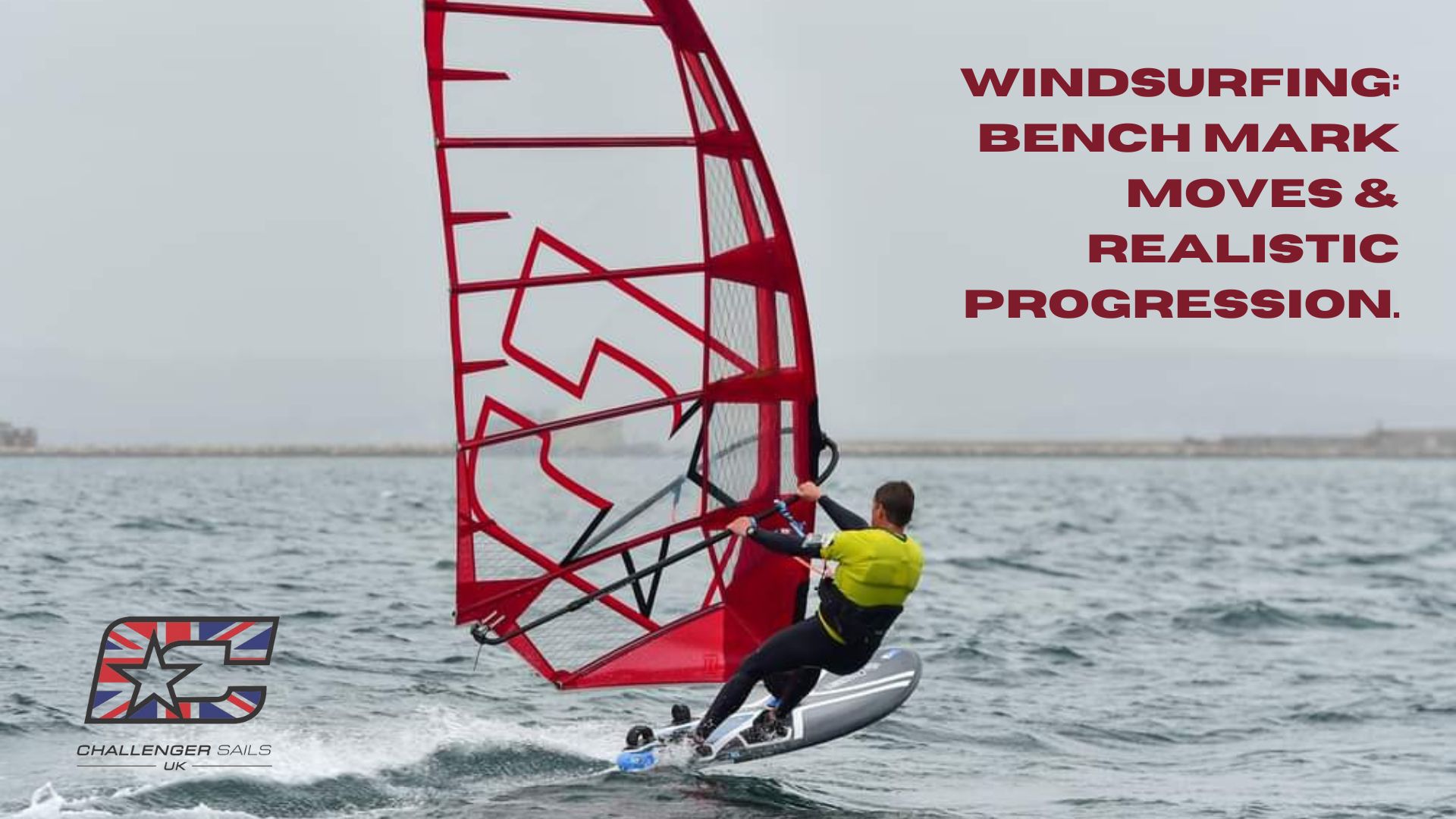
Windsurfing begins as soon as you commit to learning.
You could choose to go it alone, and with some products – such as inflatable sail and SUP combo – you can be up and sailing (ala windSUP style) in minutes. This may be enough for many, and why not? If you’re looking to progress, however, there are key skills/moves to strive for.

Any aspiring windsurfing, looking to up the ante and nail the goal of blasting across the brine will need to check the following skills off. It’s all pretty doable – especially if you get yourself some quality windsurfing coaching. This maybe aborad in warmer climes, or during high season in the UK. If you’re a newbie windsurfer the biggest tip we can give, alongside learning specific skills, is perseverance. Keep at it and you’ll get there…
Upauling your windsurf sail (pulling it out of the water).
As soon as you start you’ll need to learn the correct method of uphauling – pulling the rig out of the water. It’s no good simply yanking on the uphaul rope – it won’t happen. Especially if you’re on the light/less muscled side of the spectrum.
Best course of action is to get some coaching and learn the correct technique thereby saving your back and moving on up efficiently.
Tacking (upwind turn).
Once riding (non-planing) you’ll no doubt be all smiles. Heading off into the wide blue yonder, however, is all well and good. At some point you’ll need to turn around. The most efficient redirect move (in these early stages of your windsurfing career at least) is learning to tack.
Having a good upwind turn – which is what a tack is – will set you up for planing windsurfing later in your career. It’s therefore worth persevering with and cracking.
Gybing (downwind turn).
Once you can steer, sail upwind confidently and tack in light winds – thereby being able to get yourself back to shore – you should be looking at turning downwind, or gybing as it’s more commonly known.
Swinging the rig over the nose of your board will give you the understanding and feeling of what happens during the higher wind version of this move. Being able to mix things up between tacking and gybing is the basis for more advanced windsurfing.
Harness work.
All of the above is practised in light winds. Many will be blissfully content cruising around in less than 10knots – which is fine. If, however, you’re an intermediate wanting to move into the realms of higher wind windsurfing, and planing conditions, then mastering the use of your harness is the next step.
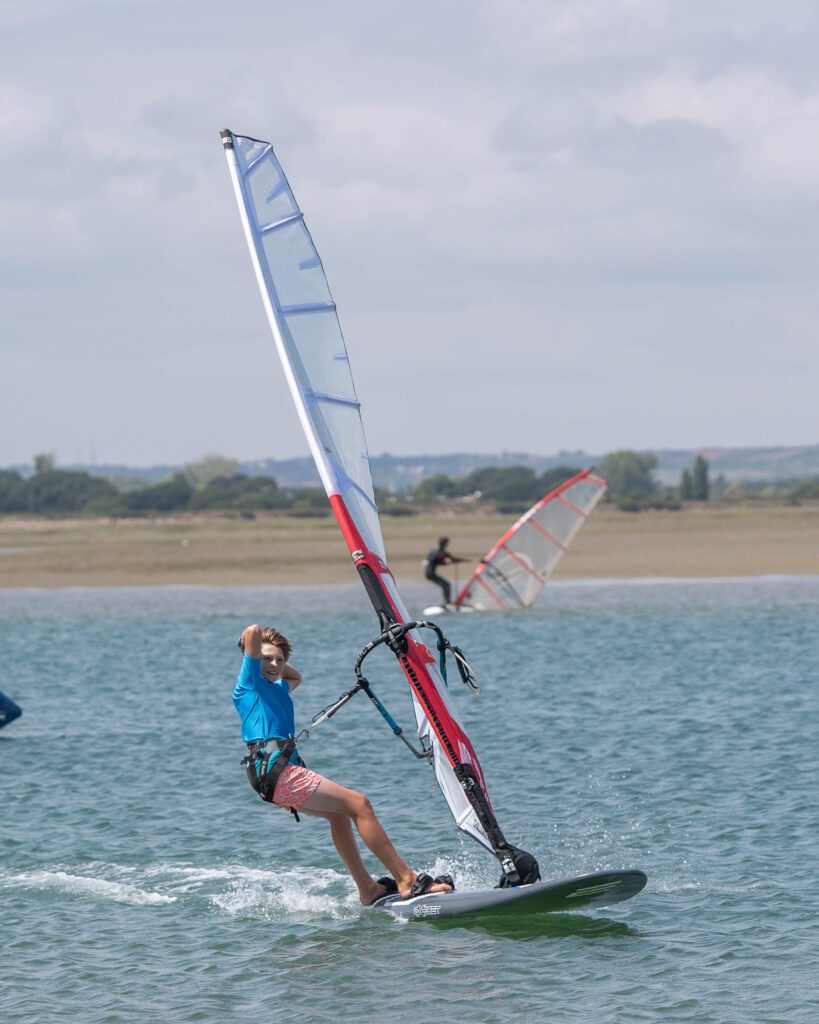
Contrary to popular myth a windsurfing harness isn’t there to help alleviate strain on your back – although by association it does. A windsurfing harness is predominantly designed to create downforce. This flattens your board and allows it to ride over the water fast and efficiently.
A fast and efficient board helps your sled lift – in combo with sail and fin – eventually leading to acceleration and planing. (Planing is having your board lift, propel forward and overtake its bow wave).

Footstraps and planing.
Once planing, (think skimming across the water’s surface like a stone) you have the option of slipping feet into footstraps. This will ultimately give riders more control over their board, help with further acceleration and deliver the means to nail those aerial tricks you see plastered across the windsurfing media.

Getting into footstraps is tricky, and during those first attempts may seem completely impossible. One method is using training strap positions which can be found on many intermediate windsurfing boards. Being set slightly further forwards it’s a bit easier to slip feet into. As riders get more confident straps can be shifted back towards the tail.
Beach and water start.
Both the beach and water start are key moves that help with launching from shore and from deep water. The water start is arguably more important as this negates the need to uphaul.
Both skills will make the rider look more pro and less like a beginner. Plus it means quick getaways, once technique has been refined, are possible.
Carve gybing.
The act of belting full throttle into a downwind turn, using planing speed to carry you through the middle part of the move and exit fast has been the pot of gold at the end of the rainbow for many years. It’s the first full power move that windsurfers aspire to nail. Some spend their whole lives trying to succeed while others stomp it quicker than the blink of an eye. Countless instructional articles have been written about the carve gybe and windsurfing coaches all over the world spend large chunks of time running through land and water drills to help sailors achieve it.
In reality, carve gybes are easier than you’d think. Once you can plane comfortable, blast back and forth and water start there’s really no reason to not be going for them. The feeling of that first full power turn is unforgettable.
Chop hopping.
Footstraps, as we’ve already said, allow windsurfers to ping their kit into the air and fly. Watch any pro sailor and their mid-air contortionism can be mind boggling. For many, however, simply being able to get a little daylight between board and water is enough.
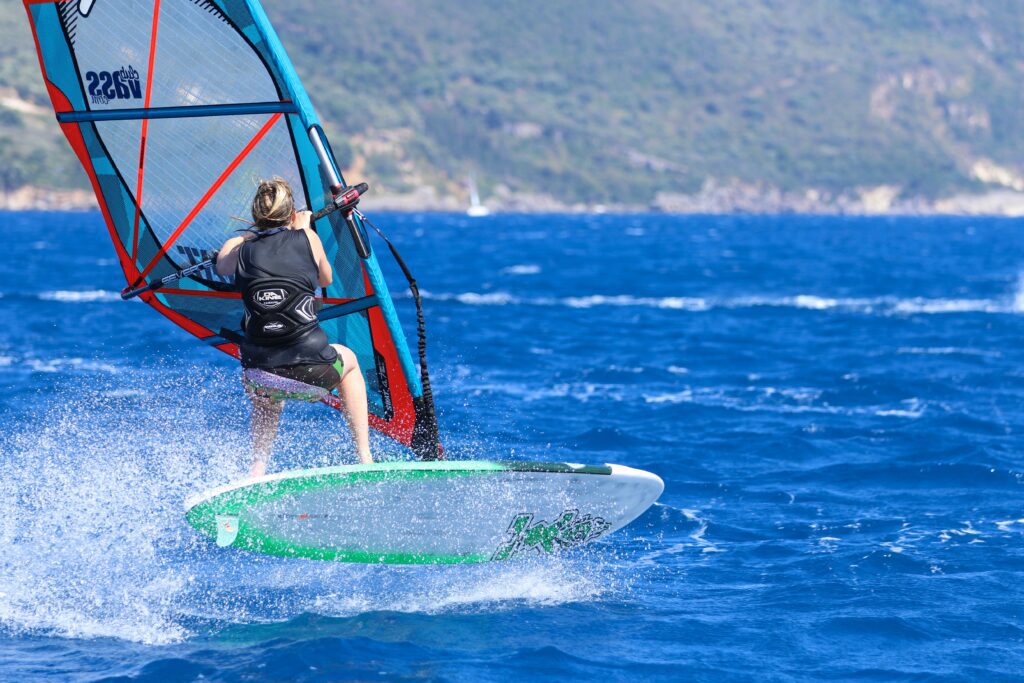
A perfectly executed chop hop can be as rewarding as a much loftier jump.
Jumping.
Going higher and actually jumping is the next step on from chop hops. Usually a bigger piece of rolling swell or properly formed wave will be used in conjunction with power in the sail to lift riders skyward. Tucking up mid-flight can be euphoric and some windsurfers dedicate their whole sailing career to jumping.

Once in the air it’s then up to you what happens next. Simply float it back down or use your momentum to initiate a move like the following.
Forward looping.
After learning to carve gybe the most notorious windsurfing manoeuvre is the forward loop. Even in this day and age, where pros twist, flip and invert themselves in all manner of ways, the forward loop remains the ultimate hero move for many real world sailors. A decent loop will get heads turning from the beach and have fellow riders bestow god like status on the rider who nailed.
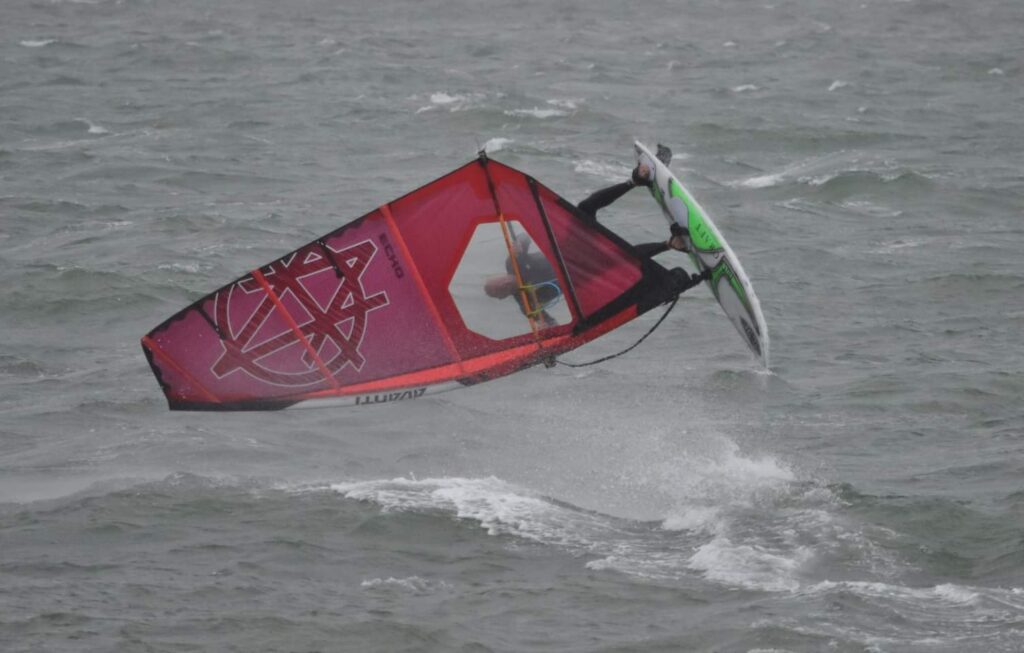
Forwards take on many different forms. There’s the flat water speed loop – done at lesser altitudes. You can then chuck yourself off bigger lumps of chop to gain more height. Moving on riders have the option of hitting waves at full power and rotating high into the air. For the hell man out there, and with the right conditions, it’s possible to pull off a full on pole vault style end over end forward loop. And let’s not forget every other type of rotation.
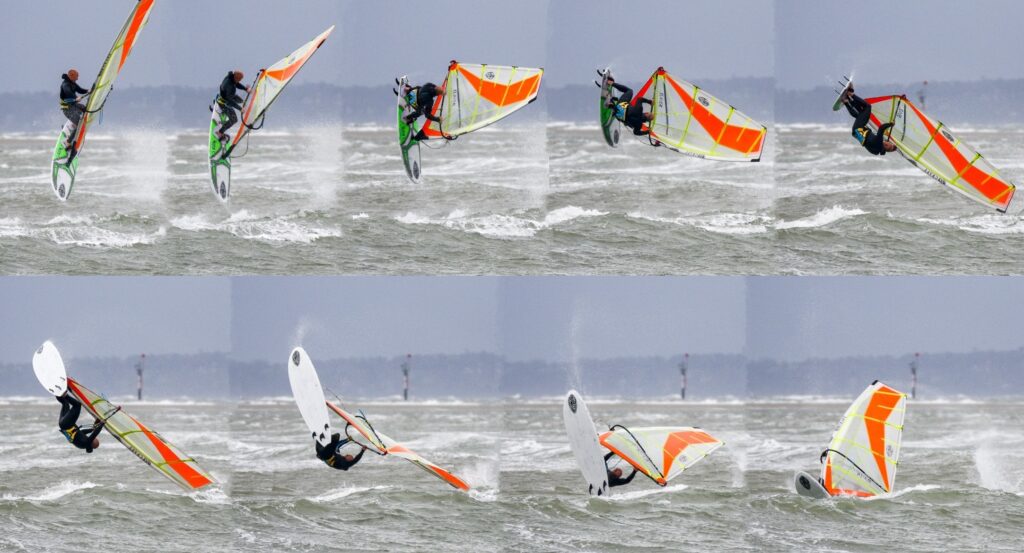
The main thing with forward looping is plucking up the courage to go for it. Even though it’s one of the less technical windsurf moves forwards instils fear in those trying it for the first time. If you’re planning on looping for the first time then just go for it – commit, don’t let go and discover it’s a whole less scary than originally thought.
The sky’s the limit…
If you’re nailing all of the above then who knows where your windsurfing career will take you. There are so many different skills and techniques to learn, it’s almost never ending. At times this can be frustrating but one thing’s for sure: windsurfing is never dull!
Don’t forget to check out Challenger Sails UK’s blog for more windsurfing articles.
